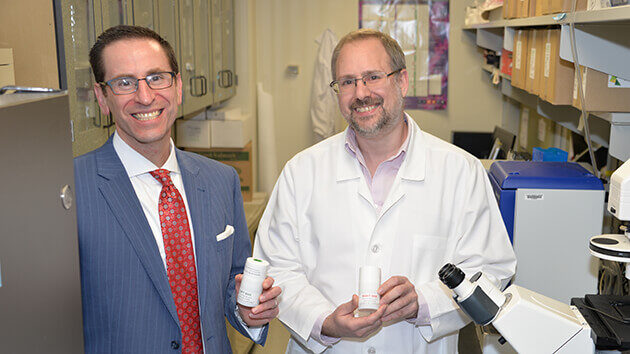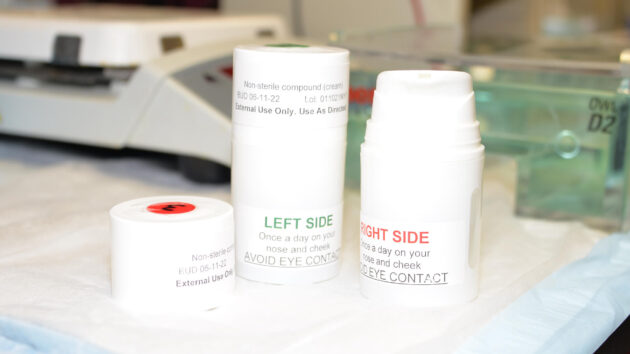Partnership Leads to Potential New Treatment for Rosacea in the Eyes

More than 14 million people in the U.S. are living with rosacea, a chronic inflammation that causes a red, swollen rash, usually on the face. Approximately half of them also experience a form that affects their eyes, known as ocular rosacea.
“This can result in drying of the surface of the eye, putting patients at risk of pain, irritation, cosmetic deformity, and even vision loss,” explained ophthalmologist Edward Wladis, MD, professor and chair of the Lions Eye Institute, Department of Ophthalmology at Albany Medical Center.
To ease their symptoms, many people are advised to make lifestyle modifications, such as supplementing their diet with omega-3 fatty acids and avoiding coffee, chocolate, alcohol, sunshine, and stress.
Dr. Wladis notes that when these modifications don’t work, there are some treatment options available, including oral antibiotics and a procedure using intense pulsed light, but they’re often ineffective and fraught with complications and side effects.
“There is currently no cure or truly effective therapy,” he added.
But Dr. Wladis and scientist Alejandro Adam, PhD, associate professor in the Department of Molecular and Cellular Physiology at Albany Medical College, have been working to change that.
For more than a decade, they’ve been collaborating to develop an effective treatment for ocular rosacea, with exciting results so far.
Last year, they joined forces with Jacqueline Busingye, MD, chief of ophthalmology at Albany Stratton VA Medical Center, the principal investigator on a Phase I clinical trial for a topical cream based on their research. Sponsored by the VA hospital, the study was recently completed in a small group of VA patients and showed no adverse effects.
“We identified a vexing clinical problem, figured out how to understand it in greater detail, and worked together toward our goal of developing a new therapy,” said Dr. Wladis.
Their combined expertise and the advantage of being part of an academic medical center have been critical to their success. As they began their research, Dr. Wladis obtained tissue samples from his patients who had elective eyelid surgeries at Albany Medical Center, including both those who had rosacea and those who didn’t. Dr. Adam used histology and immunohistochemistry to study those samples at the molecular level and learn more about the pathogenesis of rosacea.
The studies developed through this collaboration demonstrated that two distinct proteins are activated at very high levels in the skin of rosacea patients. Drawing on those results, Drs. Wladis and Adam developed and patented the cream, which is applied to the cheeks and nose.
“Thanks to Albany Med Health System’s commitment to translational research, we were able to take a concept from basic science investigation all the way through a Phase I study,” said Dr. Wladis. “Very few medical colleges and even fewer departments have the ability to form such meaningful collaborations that will help people.”
“Our collaboration is a successful example of the larger translational research program that’s available at Albany Medical Center,” added Dr. Adam, who also noted the support their research has received from the Biomedical Acceleration & Commercialization Center (BACC) at Albany Medical College, the National Rosacea Society, and the FuzeHub Jeff Lawrence Innovation Fund.
